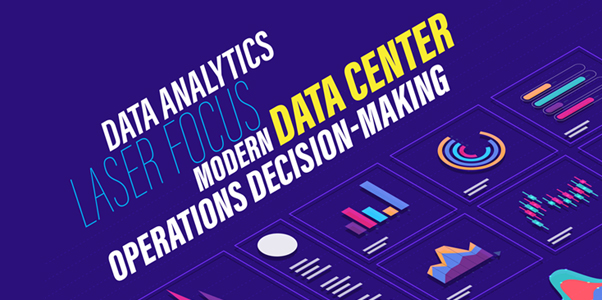
By Michael Skurla
Data analytics is more than gold in today’s data driven business decision making where nearly 92% of organizations last year “achieved measurable value” from their data analytics investments. The investment was also the driving force for 3 out of 5 organizations’ business innovations.
With millions of data points indispensable to the operation of a portfolio, modern data centers’ critical business decision-making focuses vastly on data analytics. Data captured from computing, network, and storage equip operators with insight into facilities’ patterns and trends–along with a range of valuable, fact-based data insights–replacing impulsive business decisions with insightful logical predictions.
It’s well-known that siloed raw data from existing IoT devices and in-building systems becomes most valuable when aggregated and analyzed in real-time. The historical context into the data center operations from IoT DCIM platform–deployed across Edge to hyperscale data centers–not only provides real-time access to data but transforms raw data into actionable insight that optimizes business decisions to adapt to long-term scaling and changes. Access to a range of actionable analytics helps optimize operations and pre-empt equipment maintenance to prevent costly expenditures and avoid downtime. This benefits not just facilities’ management, but financial stakeholders, and end-user clients.
Expedited business decisions, driven by data analytics from the DCIM system, also deliver business intelligence and real-time monitoring of equipment, sensors, and devices. These platforms provide a focused access point to aggregated data from various distributed data centers, streamlining operational intelligence and minimizing staff time wastage and downtime costs.
ADDITIONALLY:
Data Center Energy Use Analytics
The energy management application is expected to dominate the overall building analytics market as energy costs continue to skyrocket. On an annual basis, commercial and industrial buildings in the U.S. spend $400 billion in energy costs and $120 million in unused energy. As little as a 10 percent reduction in energy spendcan save up to $40 billion in annual energy costs–and help reduce greenhouse gas emissions by the equivalent of 49 million motor vehicles.
Since the largest energy consumer in a data center is the chilled water plant–with the average data center cooling system consuming about 40% of the total power–access to historical data points from DCIM platforms for the entire chilled water plant system (chillers, pumps, cooling towers) is priceless data. A review of the data points can help operators make minor tweaks to the control systems that can rake in anywhere between a 10% to 20% reduction in energy costs. In a large data center, this could translate into nearly $1 million annual energy savings.
Utilizing IoT DCIM data analytics provides access to the complete ecosystem of building automation and performance technologies, enabling the smooth implementation of recommended solutions. This approach assists plant operators in maximizing the value of their data warehouse and accelerates the deployment of these solutions across a portfolio of sites within a few weeks. Operators can apply optimized set points to their existing building controls without the need for new or additional hardware. Furthermore, a DCIM IoT Platform allows operators to remotely deploy and automate their facilities.
Mastering data-driven business decision-making takes time and practice. But with the right trusted software solutions in place, today’s modern data center operators can power up some real savings in energy costs; all while having actionable, data-driven business decisions at a fraction of the cost.
Michael Skurla is the Chief Product Officer of Radix IoT. He can be reached at [email protected]..